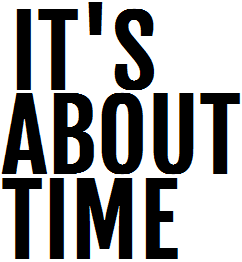
It’s been 3 months since I’ve returned from my summer in Peru and I’m just now able to process the experience. Not that it was so heavy or deep or that I drank too much coca tea but it was a lot. Friends and family continue to ask me why I went, what I did and what I learned from the experience – all complicated questions. I wrote a full post on why I quit my job for this long-term stay abroad but the long story short is that I wanted to improve my Spanish and get living experience in another country. As a part of a cultural immersion program called Maximo Nivel, I lived with a host family, attended 1:1 Spanish classes, and interned at the local ChocoMuseo. My itinerary and experience were featured in GirlGoTravel, a resource encouraging women to travel solo. Although I’m still gleaning and reaping the impact of the trip, I’ve written to share my stories and recommendations if you plan to go on a long or short trip to Peru.
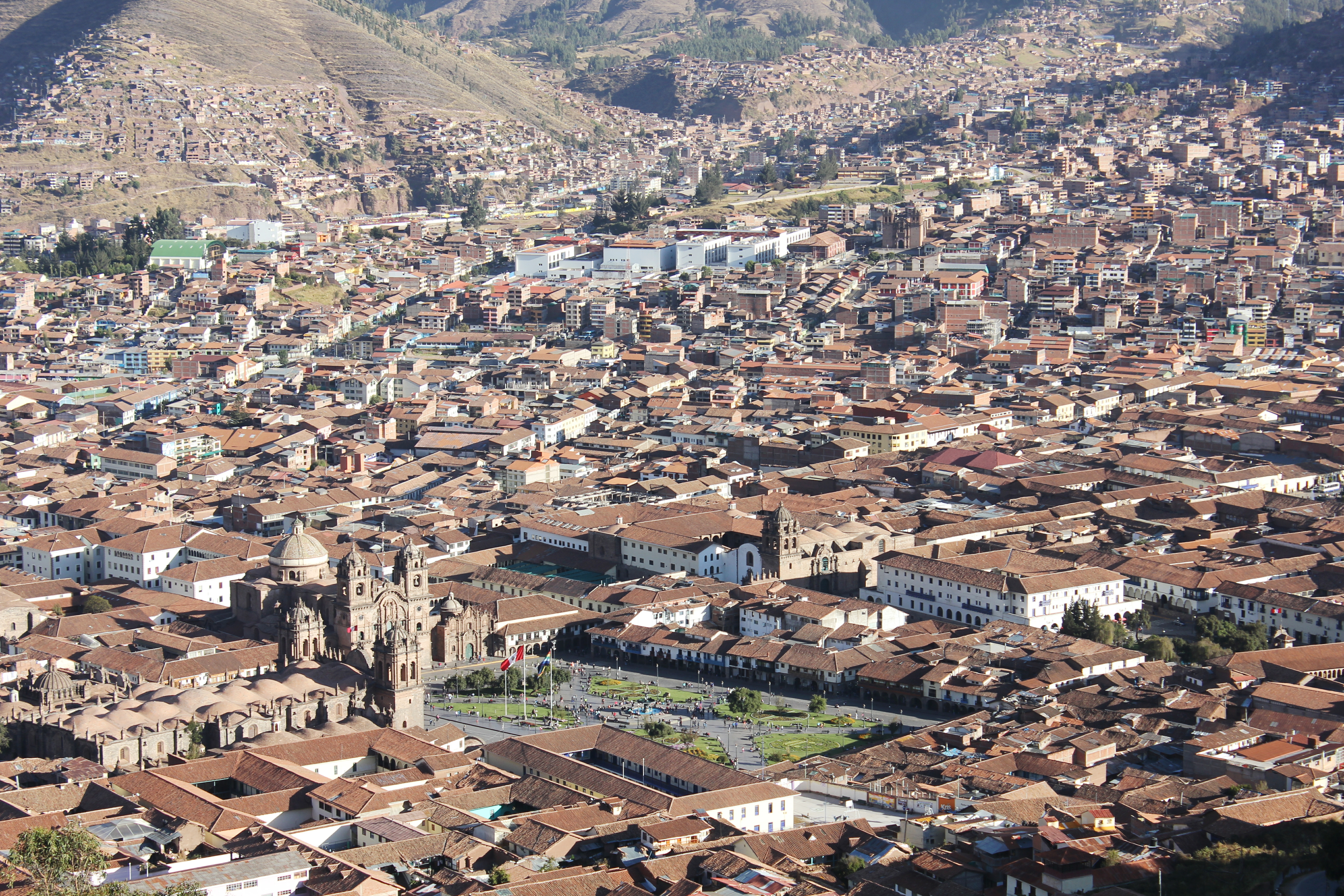
Home Base: Cusco
Cusco is underrated. Maybe I say this because I called the city home during my 2-month stay and got the chance to get to know it from a local perspective. Life in the city is busy with tourists, as it was once the capital of the Inca Empire and now a crossroads between adventure travel destinations in Southeastern Peru. The city has so much to offer by way of textile and gift shopping, original cobblestone streets, Spanish architecture, exquisite food, and a bustling nightlife centered around Plaza De Armas. I spent most of my weekdays taking Spanish classes at Maximo Nivel and interning at the ChocoMuseo giving tours and working in the factory. The weekends were spent out of town or long nights at clubs like Mama Africa, Chango, and Mythology.
If you find yourself in Cusco with a few days to kill and aren’t too overwhelmed by the altitude, might I suggest shopping at San Pedro Market with a walk through the Pasaje Mercadillo to check out how vendors sprawl their goods for sale on the ground; A walk through authentic Pre-Colombian architecture (like the 12 angle stone) on the way to San Blas to explore the Incan masonry and impromptu festivals hosted near the temple; A further walk to San Cristobal for a view of the city; And another view of the city and ruins head at Pukamuqu where you can catch the locals picnicking on Sundays and a short walk to Saqsaywaman. For a great lunch visit Don Bigote for Peruvian style roasted chicken and Limbus Restobar for a drink at sunset.
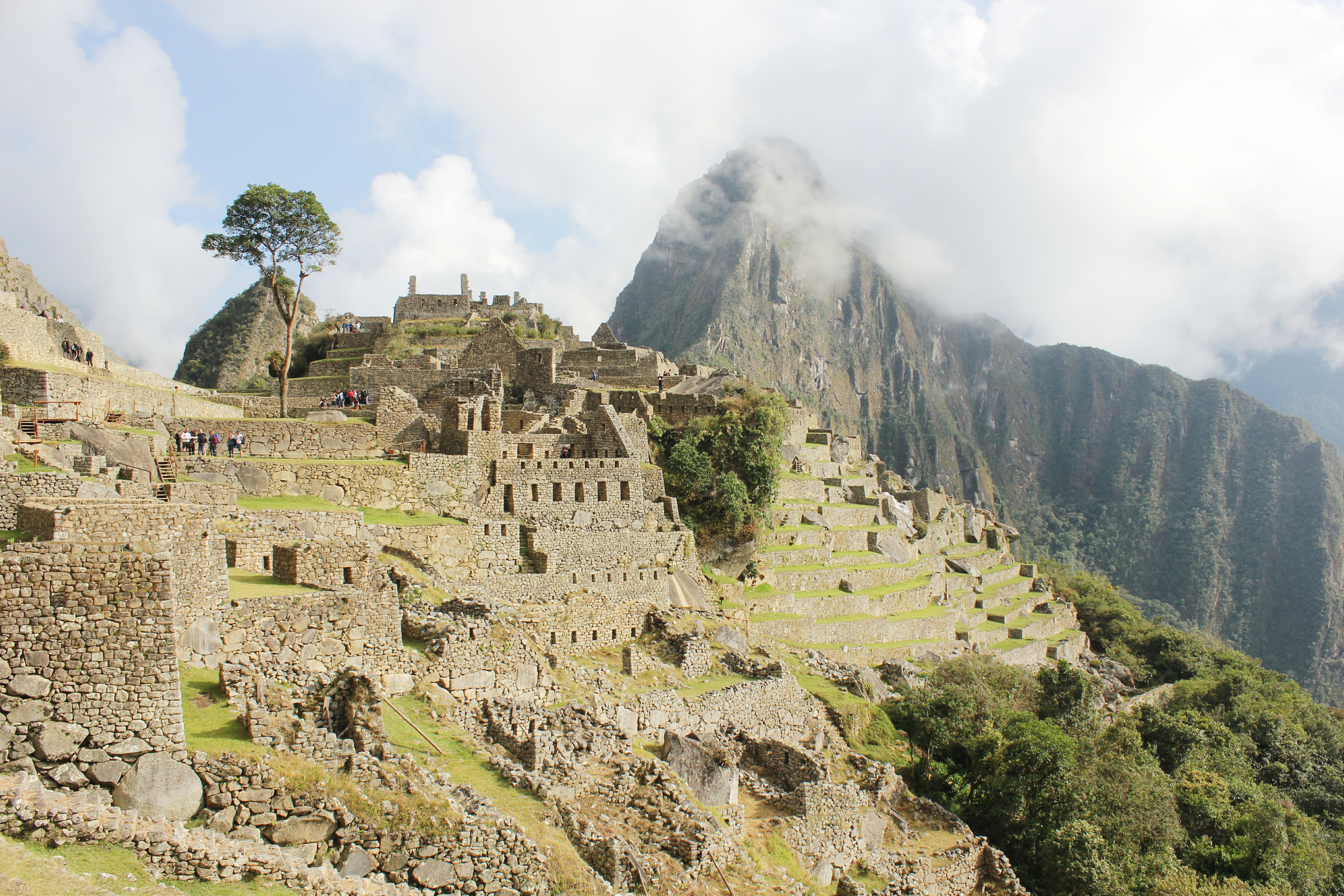
Must-See: Machu Picchu
If you’re planning to travel to Peru, there’s a good chance you’ve read or heard about Machu Picchu. It’s an Inca citadel that was discovered by American Historian Hiram Bingham in 1911 and is now a UNESCO World Heritage Site and New Seven Wonder of the World. My route to the attraction was an adventure as I chose to do the 4-day Inca Jungle Trek with a company called American Inca Trail. This included mountain biking down Abra Malaga Pass, white water rafting in Santa Maria, a full-day hike through parts of the Inca trail and organic farms to Santa Teresa, a dip in the hot springs at Cocalmayo on arrival, ziplining in Santa Teresa, a hike to Hydroelectrica and then more trekking along the traditional railroad tracks to Aguas Calientes, the town of Machu Picchu.
On the final day, we got up super early to visit Machu Picchu and the site was incredible. I had heard so much about it from friends who visited before me but it’s something you really have to see to believe. I was lucky (read: brave) enough to also reserve a hike up Huayna Picchu, the tall mountain that rises over Machu Picchu. Although it was 45 minutes of pure uphill stairs, it was an unmatched experience and view. If there’s anything you do in Peru, let it be a trip to Machu Picchu. ***Please, please, please note that you must reserve your tickets in advance as they restrict the number of visitors per day.*** For more information, here’s a post I wrote on what to consider before you go.
Tourism is big business in Peru and there are so many travel agencies to choose from in Cusco. The ease of booking last minute day trips and excursions made it easy for me to get away for the weekend (except for Machu Picchu, book that in advance).
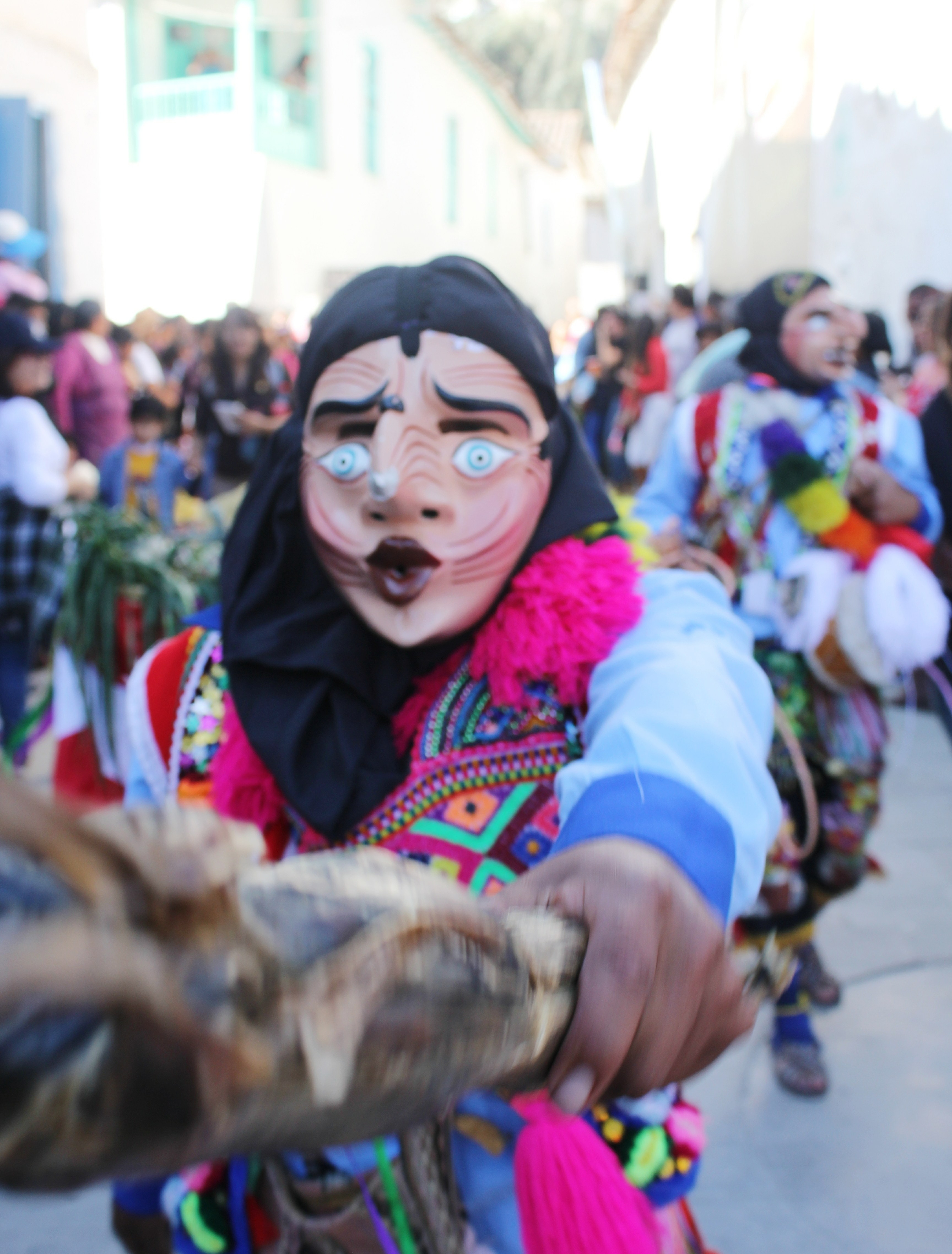
Local Experience: Virgen Del Carmen Festival – July
I didn’t know anything about this event until my host mom received an elaborate bread “invitation” inviting her and her husband to the festival. A week before the 4-day extravaganza my host sister asked me if I’d like to go with her and some friends on a road trip to the town where the event is held, Puarcartambo. The festival itself consists of varying groups of traditional dancers portraying events in Peruvian history. On one day the Virgen del Carmen is paraded through the town to bless everyone and scare away the demons. The site was spectacular. Everyone was masked and dressed and there was even a man going around whipping those in the way. It was scary and impressive at the same time. My friend and I only stayed for one day, missing the dancing sunrise created at Tres Cruces de Oro by the unique climate conditions at the edge of the Andean Mountain range. The festival and view are definitely worth the trek and planning if you have extra days to spare and want to see a full-on display of culture.
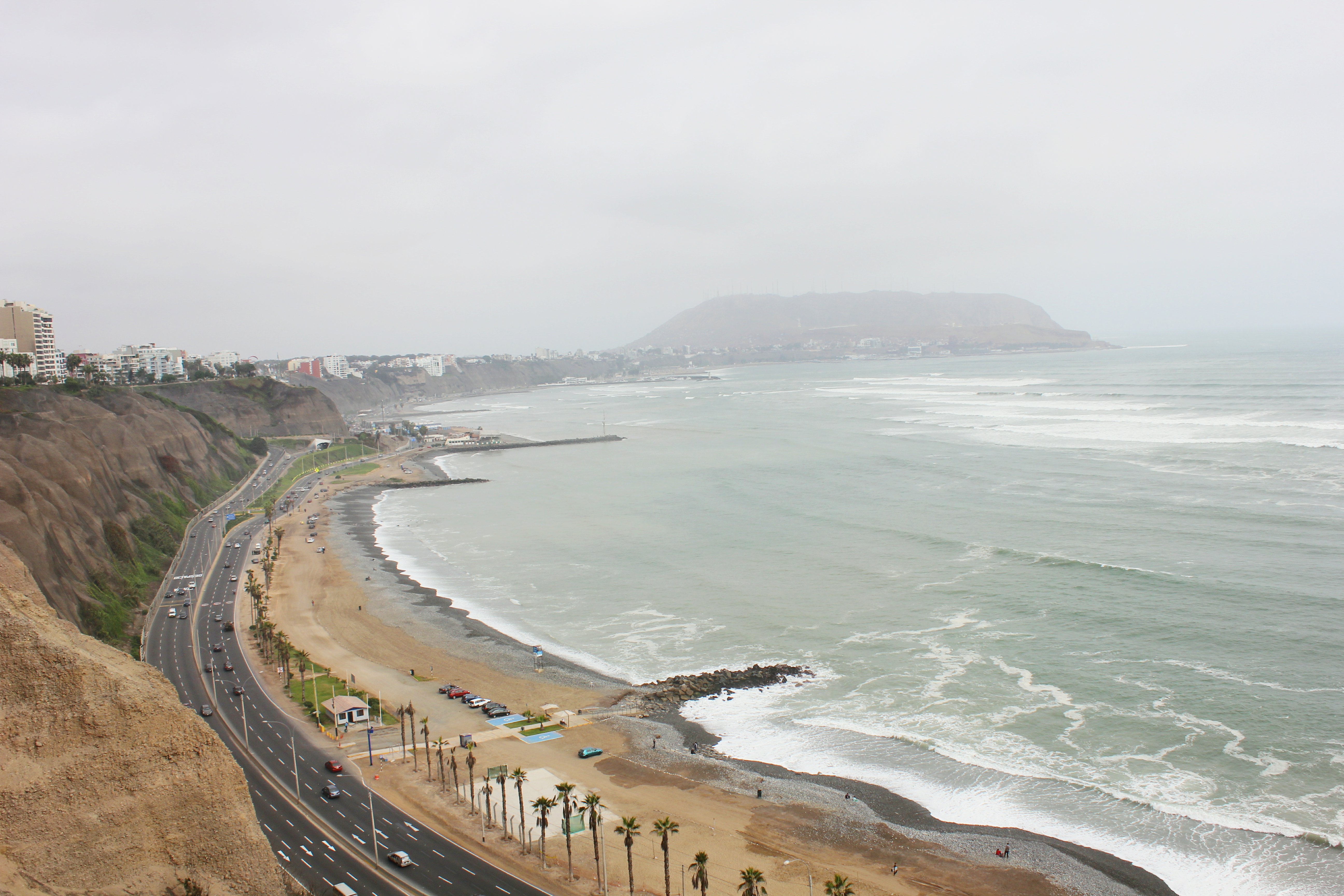
Urban Vibes: Lima
Don’t forget the capital city! I was lucky to explore this place with a couple friends from the US, which gave me a new perspective instead of a lonely layover spent indoors. The movement of the big city helped energize me after spending so much time in Cusco. Lima definitely feels like a city, especially in it’s Miraflores and Barranco neighborhoods, but with a beachy and artsy-urban vibe of its own. With only 4 days, we didn’t have much time to explore the outskirts of the city and instead hit the highlights: people-watching at the Larcomar Shopping Center, a walk through Plaza Mayor and random street performers on the way to getting our art fix at the MALI – Museo de Arte de Lima, and, of course, eating our weight in ceviche (highly recommend Punto Azul in Miraflores). For more recos on where to go visit my post on Lima.
Worth a Day or Two: Sacred Valley
The Sacred Valley is known as the heart of the Inca Empire and is a route linking archaeological and historically significant cities and sites in the Urubamba Valley. The day trip I went on included a bus tour with stops in the following six cities:
 1. Pisac is a small village near Cusco known for its famous handicrafts market in the main square. The best day to visit is Sunday for the colorful display by the local Quechua community. You’ll for sure want to bring your camera but please be respectful when photographing people or vendors. Ask and be sure to tip each person at least a sole ($0.30 USD) for their participation. You can also visit the Potato Park to learn about the cultivation of Peruvian potatoes. If you just want to visit Pisac and skip the full Sacred Valley your, take a bus from Cusco for about 4 soles ($1.24 USD) and an hour later, you’re there!
1. Pisac is a small village near Cusco known for its famous handicrafts market in the main square. The best day to visit is Sunday for the colorful display by the local Quechua community. You’ll for sure want to bring your camera but please be respectful when photographing people or vendors. Ask and be sure to tip each person at least a sole ($0.30 USD) for their participation. You can also visit the Potato Park to learn about the cultivation of Peruvian potatoes. If you just want to visit Pisac and skip the full Sacred Valley your, take a bus from Cusco for about 4 soles ($1.24 USD) and an hour later, you’re there!
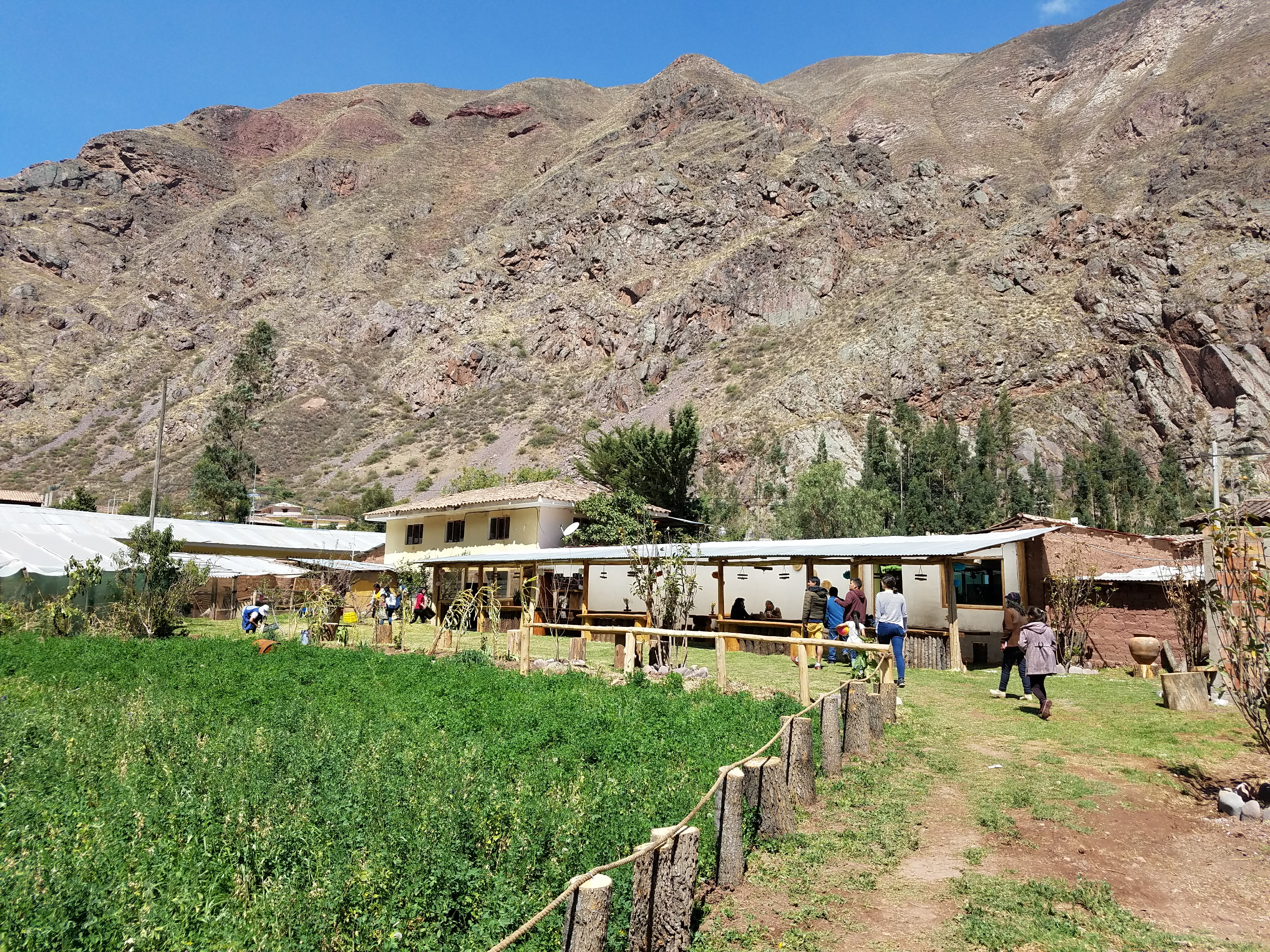 2. Urubamba is the largest town in the Sacred Valley. Our tour only stopped there for lunch but I was fortunate enough to visit on a couple different occasions. One was for the opening of a friend of a friend’s brother’s cuy farm and restaurant in the area for my first roasted guinea pig experience (a story for another day, but don’t knock it until you try it). The second time was for a visit to the Cerveceria del Valle Sagrado where we also caught a glimpse of the Skylodge Adventure Suites, a series of glass capsules hanging from the side of the mountain that can only be accessed by a hike or 400m climb. The city is also a great jumping off point if you want to visit Machu Picchu, Moray and the Salt Mines (45-minute drive).
2. Urubamba is the largest town in the Sacred Valley. Our tour only stopped there for lunch but I was fortunate enough to visit on a couple different occasions. One was for the opening of a friend of a friend’s brother’s cuy farm and restaurant in the area for my first roasted guinea pig experience (a story for another day, but don’t knock it until you try it). The second time was for a visit to the Cerveceria del Valle Sagrado where we also caught a glimpse of the Skylodge Adventure Suites, a series of glass capsules hanging from the side of the mountain that can only be accessed by a hike or 400m climb. The city is also a great jumping off point if you want to visit Machu Picchu, Moray and the Salt Mines (45-minute drive).
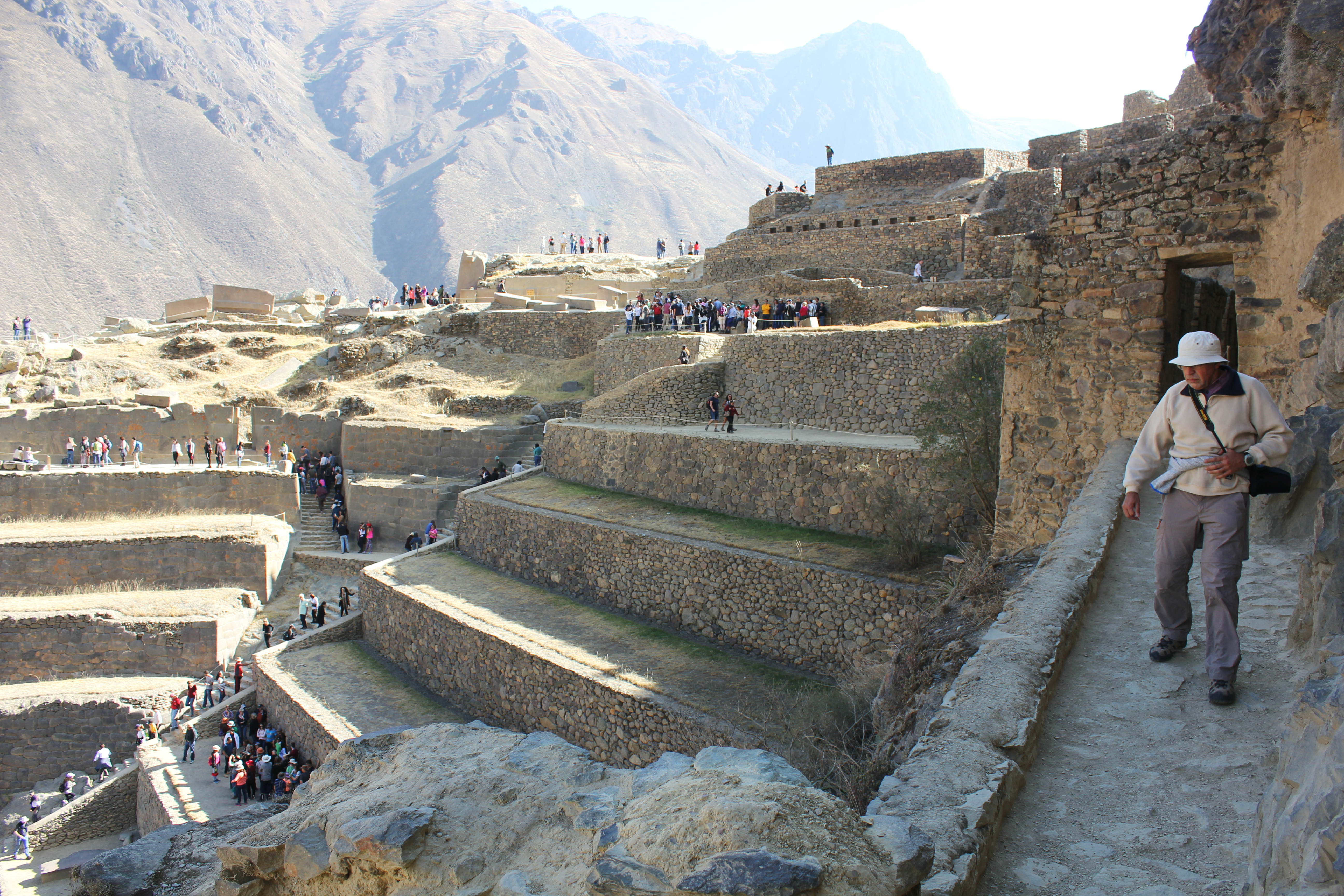 3. Ollantaytambo was the estate of Emperor Pachacuti during the Inca Empire. We walked up the massive fortress and learned the significance of the sun gate and puma to the Incas. Similar to the other towns, there is a market, places to dine, and really nice hotels making it an ideal location to spend some dedicated time or a base before heading to Machu Picchu and the rest of the Sacred Valley. Though if you’re on a day tour, don’t miss the bus! We had a passenger go missing and our tour guide asked us if we wanted to leave him. Yes, to leave a passenger behind! Some of us actually agreed to move on, since we would miss the next destination if not. I was adamant about us staying to find the guy and eventually, he turned up after a brief nap at a cafe (smh).
3. Ollantaytambo was the estate of Emperor Pachacuti during the Inca Empire. We walked up the massive fortress and learned the significance of the sun gate and puma to the Incas. Similar to the other towns, there is a market, places to dine, and really nice hotels making it an ideal location to spend some dedicated time or a base before heading to Machu Picchu and the rest of the Sacred Valley. Though if you’re on a day tour, don’t miss the bus! We had a passenger go missing and our tour guide asked us if we wanted to leave him. Yes, to leave a passenger behind! Some of us actually agreed to move on, since we would miss the next destination if not. I was adamant about us staying to find the guy and eventually, he turned up after a brief nap at a cafe (smh).
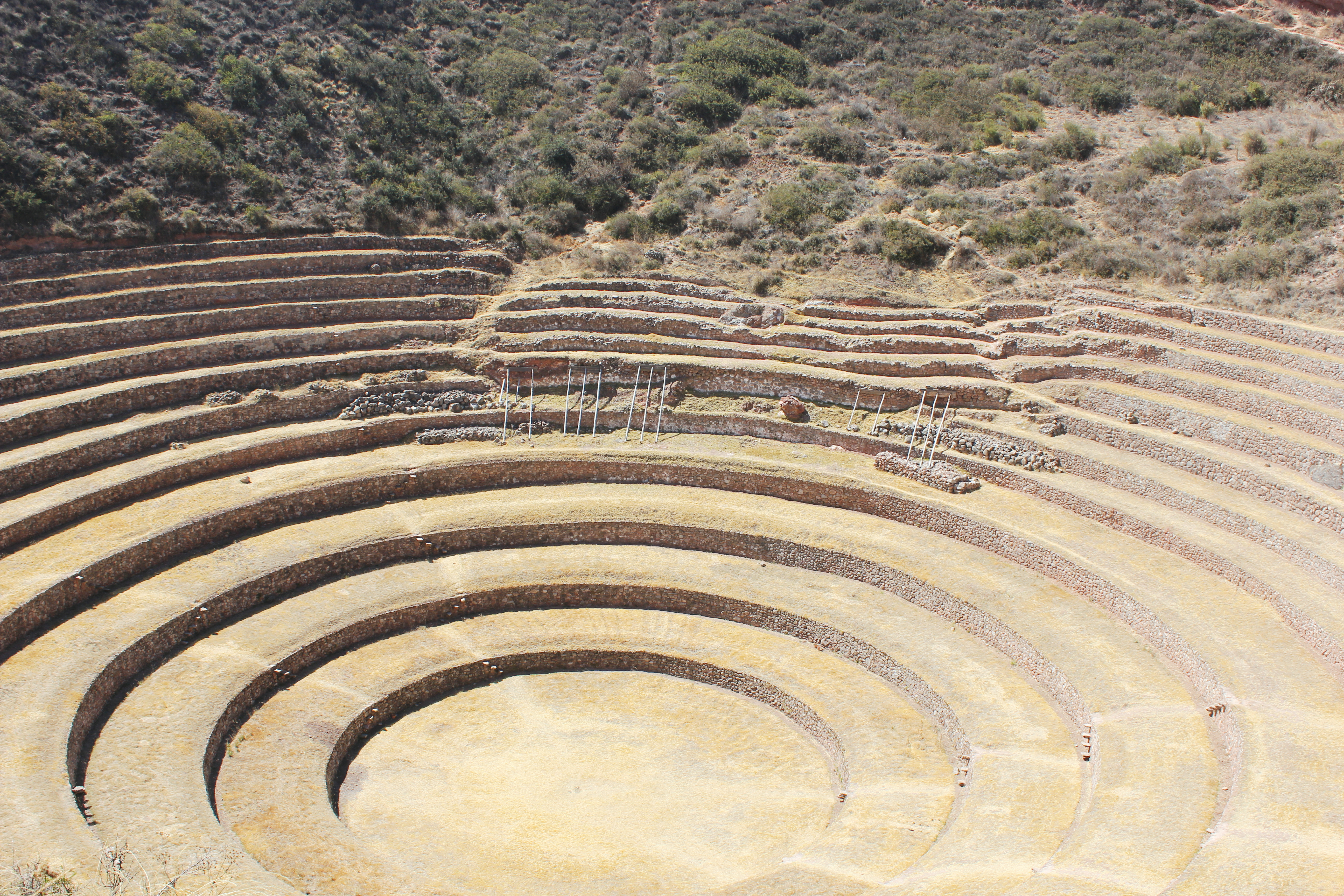 4. Moray contains interesting Inca ruins consisting of circular terraced depressions that housed experimentations with climate and agriculture. Archaeologists only presume that the depth and design were used for this purpose because of the large temperature difference between stages and the irrigation system. Also: Aliens?
4. Moray contains interesting Inca ruins consisting of circular terraced depressions that housed experimentations with climate and agriculture. Archaeologists only presume that the depth and design were used for this purpose because of the large temperature difference between stages and the irrigation system. Also: Aliens?
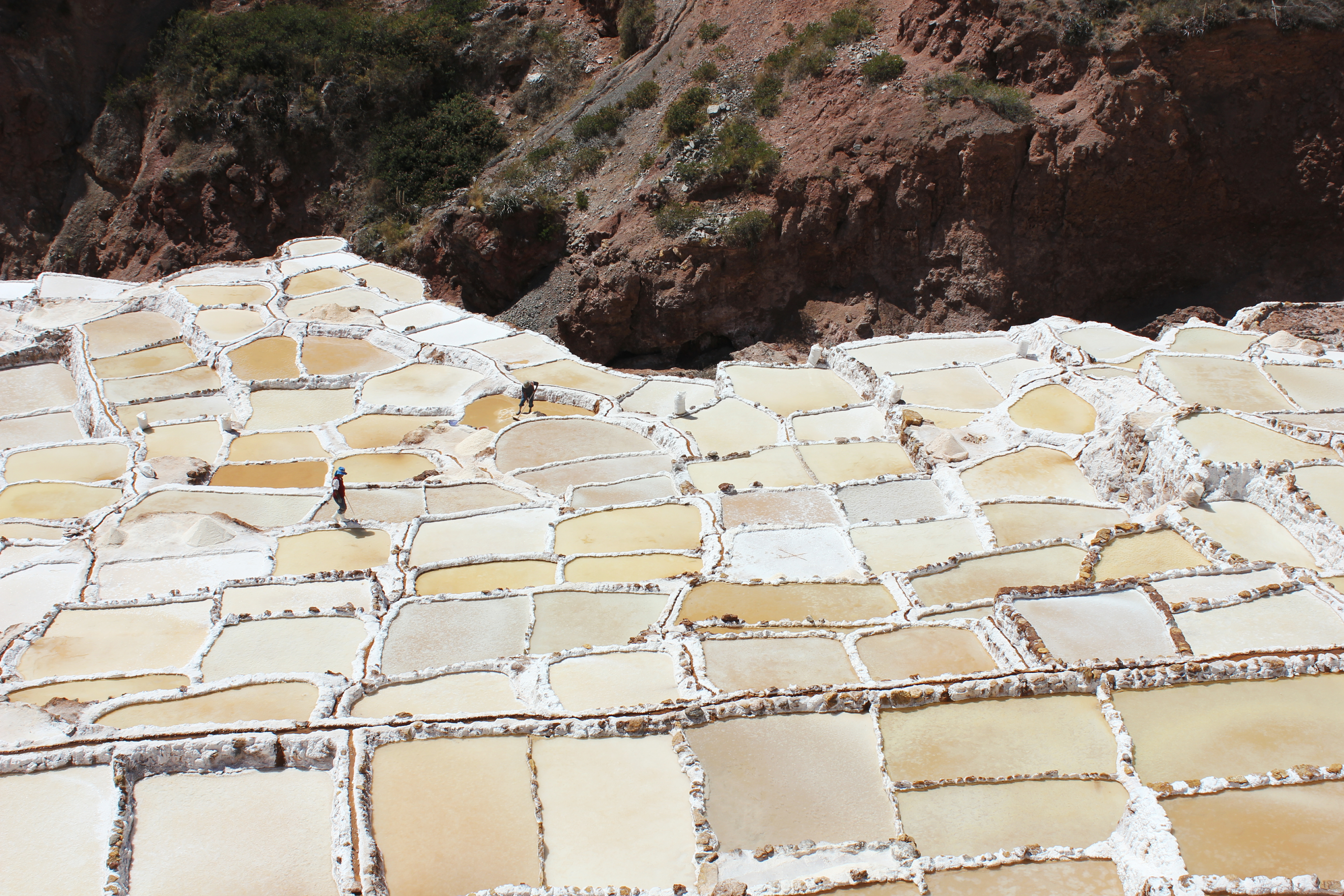 5. Maras Salt Mines or the only place on earth one can be #salty, are salt evaporation pools on a hillside for harvesting salt. You can visit the site traditionally or via quad bikes through a tour company. Don’t forget to purchase some organic salt or, my favorite, dark chocolate with sea salt candy bars in the nearby town.
5. Maras Salt Mines or the only place on earth one can be #salty, are salt evaporation pools on a hillside for harvesting salt. You can visit the site traditionally or via quad bikes through a tour company. Don’t forget to purchase some organic salt or, my favorite, dark chocolate with sea salt candy bars in the nearby town.
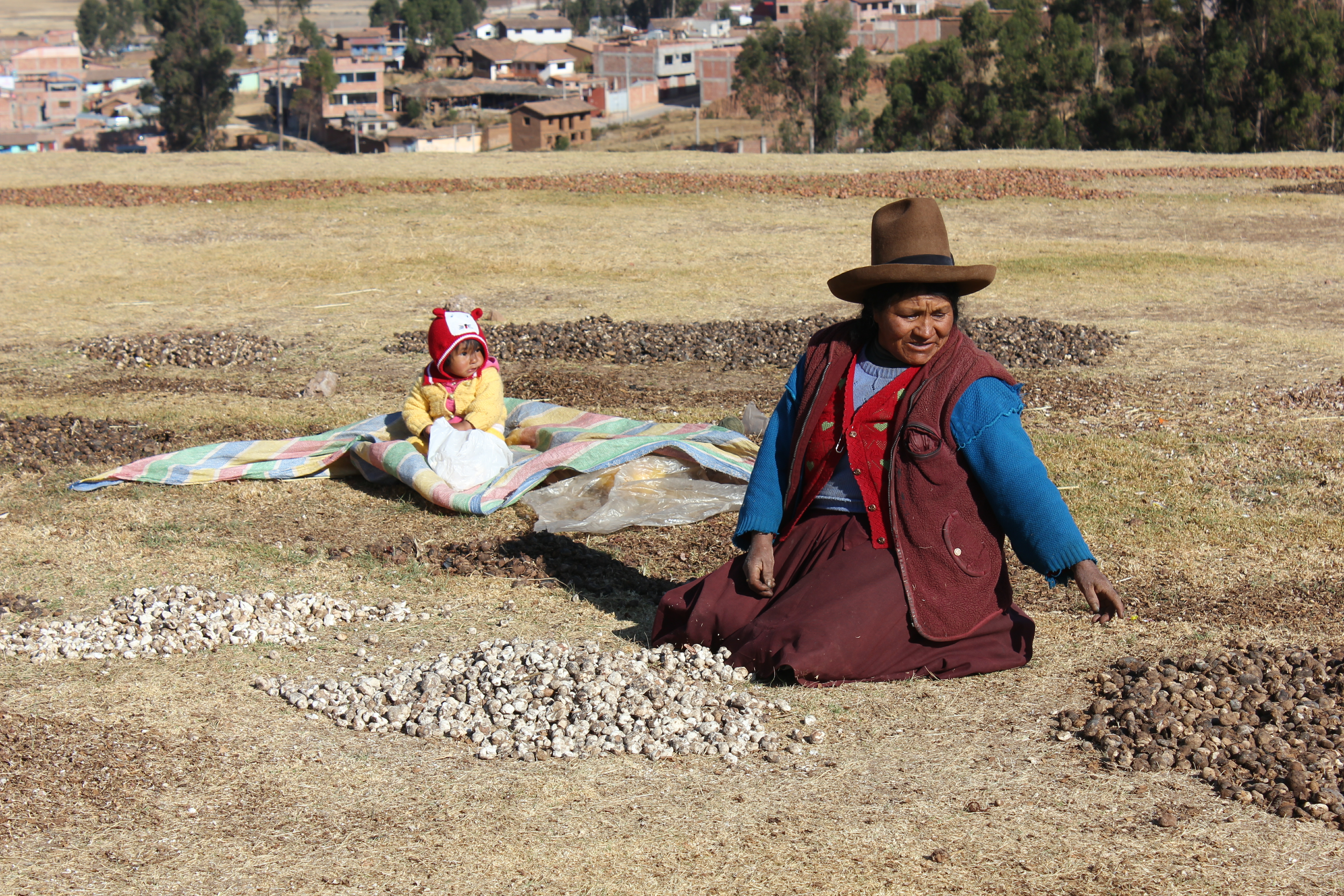 6. Chinchero was the first stop we made on our tour, but all I remember is that it’s the site of the future Chinchero International Airport (fatigue and altitude had me like :#). We toured a market and some local women showed us how they dye thread and make natural lipstick out of smashing bugs.
6. Chinchero was the first stop we made on our tour, but all I remember is that it’s the site of the future Chinchero International Airport (fatigue and altitude had me like :#). We toured a market and some local women showed us how they dye thread and make natural lipstick out of smashing bugs.
Please be respectful when photographing local people or vendors. Ask and be sure to tip each person at least a Sol ($0.33 USD) for their participation.
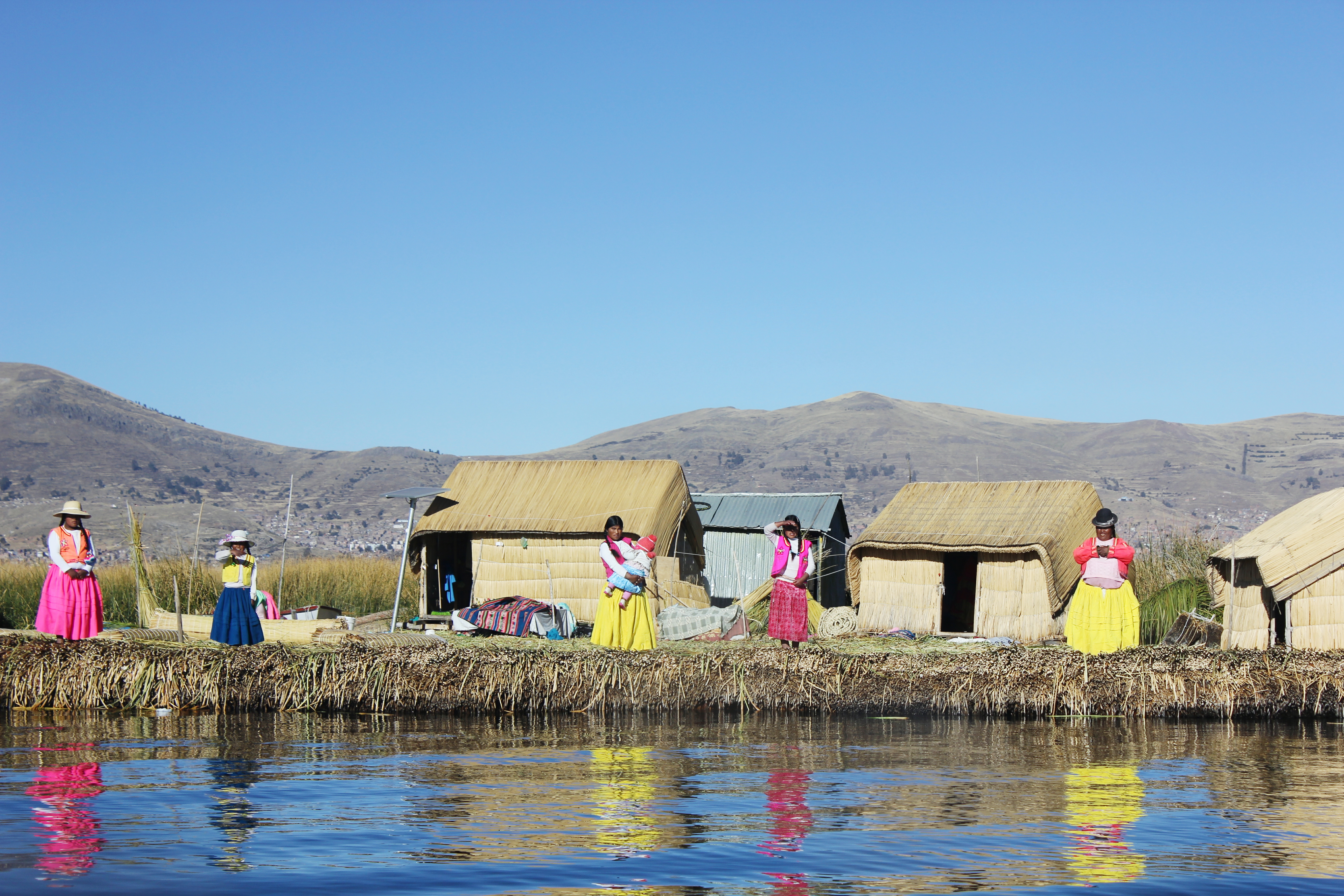
Birthplace of the Incas: Puno / Lake Titicaca
I did a project in my online college Spanish class and the only thing I remembered about Peru was Lake Titicaca. It’s South America’s largest lake and the world’s highest navigable lake at a surface elevation of 12,507 ft. It borders Bolivia and Peru and can be accessed by either country. I visited the Uros Island and Isla Taquile on an exhausting full-day tour. After an overnight bus ride from Cusco to Puno, we set sail on a small boat to Uros first learning about the island’s infrastructure and how the communities are connected. We then sailed to an island to get our passports stamped (not mandatory, but encouraged) and later made it to Isla Taquile to hike up to the top and view a group of traditional evangelists singing and local life in the market square. We later had lunch and returned to Puno to be picked up at 9 pm for another overnight bus back to Cusco. The only regret I have is that I did not opt to stay overnight on one of the islands. This would have given me more insight into more of the traditions of the people.
I spent my time in Puno alone as I was the only person to book the tour with American Inca Trails for that day. I walked through the town with a paper map and ate solo at a restaurant with a show called La Choza de Oscar. I was not lonely, though as I was met by a very nice local working at the hostel when I got to rest before touring the islands. He taught me about the history of Peru and helped me understand why coca is sacred and how the Afro-Peruvian population came to be.
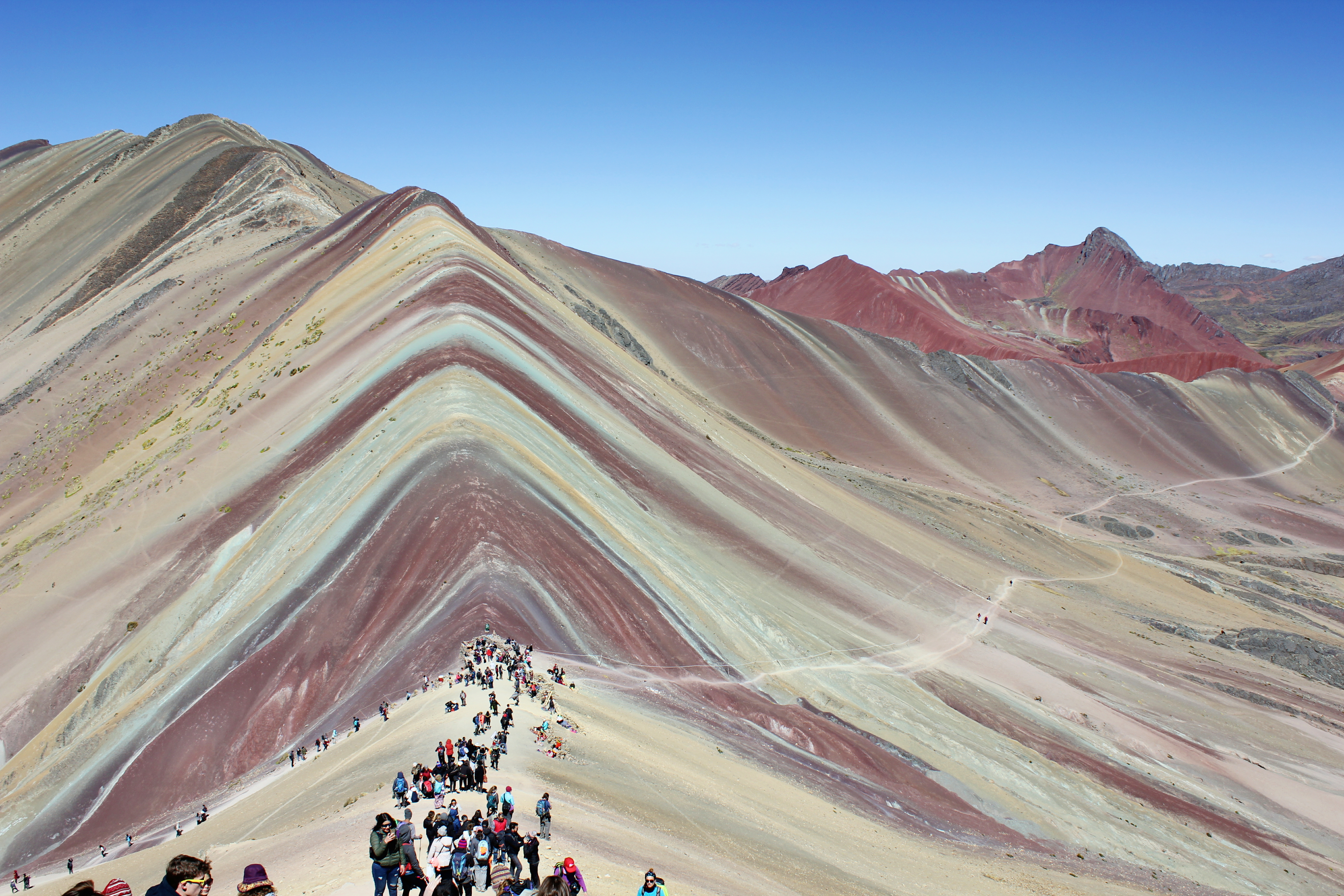
Hike to View: Rainbow Mountain
Rainbow Mountain is a relatively new tourist attraction. Also known as Vinicunca Mountain or La Montaña de los Siete Colores, the mountain gets its creative names from the sedimentary mineral layers that have been exposed by erosion forming a burst of colorful lines. It’s about a 3-hour drive from Cusco and can be done in a day. The hike itself is not easy given that its a steady uphill walk to 14,000 ft. on a cold, dirt path. This was my first adventure after 7 days in Cusco and I’ll tell you that the altitude was a killer. If you don’t have time to acclimatize, good luck! For those that know the journey is too difficult, you can rent a horse to take you up for 70 soles (~$23 USD) but know that you’ll still have to trek a bit higher to the tip-top of the mountain on your own. The hike took about an hour and a half walking, closer to half an hour by horseback.
My tour group and I also did an additional 5-hour hike down the mountain via another route called Red Valley. It was a beautiful scenery of red cascading Andean mountains and more views of the snow-capped Ausungate Mountain and waves from our llama friends grazing in the distance. We booked both Rainbow Mountain and Red Valley through an agency in San Blas on the Wednesday before the trip. Don’t forget to pack snacks, water, extra socks, and layers for the cold/warm change in temperature.
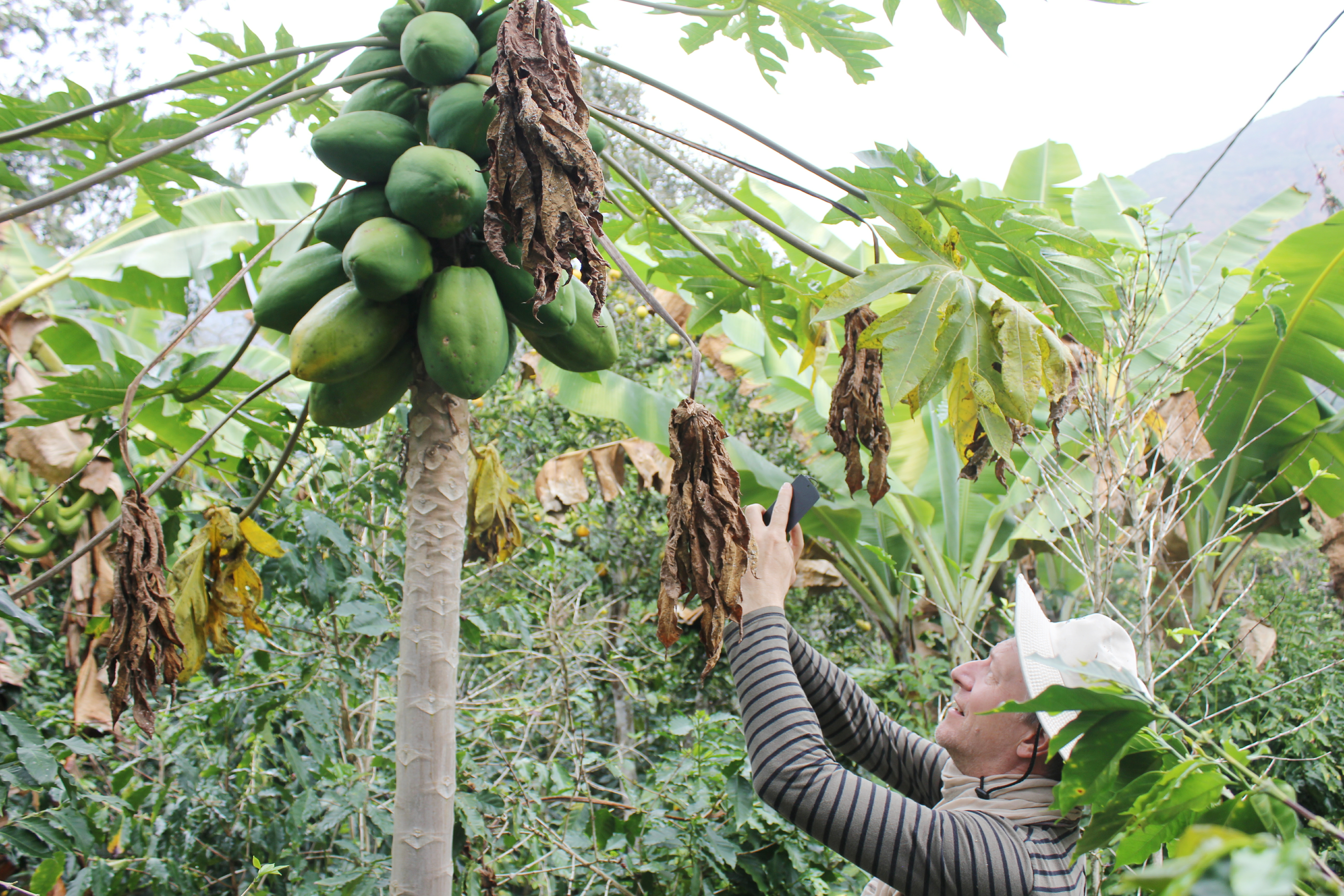
Unique Experience: Julia & Raul Farm Tours
I continue to sing praises about my experience on Julia and Raul’s farms in Huayopata as a part of a tour with the ChocoMuseo. I was asked to join the tour to be a translator for a French family but it turns out they didn’t need my help. I ended up documenting the whole trip and enjoying myself as we tried organic fruits and vegetables right off of the trees and learned how to harvest coffee and cacao, making a batch of each from scratch! It really made me appreciate sustainable farming and fair trade. If you’re interested in booking this tour, visit the ChocoExpedition’s site for more info.
 Although this doesn’t cover everything there is to do in Peru, I’ve listed a few other points of interest that locals encouraged me to visit:
Although this doesn’t cover everything there is to do in Peru, I’ve listed a few other points of interest that locals encouraged me to visit:
- Chincha – Being black in Peru, everyone thought I was Brazilian, Colombian or from a province in the Ica Region of Peru called Chincha. As is the story for most of the African Diaspora, the Afro-Peruvians faced a myriad of racial injustice since their arrival on slave ships in the early 16th century. I’m not sure of any large attractions there but I’d love to visit to get a sense of the cultural difference in regions.
- Huacachina – On a lighter note, Huacachina is the hot and hip place to adventure. It’s a desert oasis and tiny village west of the city of Ica. It has a central lagoon lined by palm trees and sand dunes for surfing at dawn. With bars, clubs, and resorts, I’m not going to miss this the next time I’m in Peru!
- Nazka Lines – Through an art exhibit at MALI in Lima, I learned about the Nazka people and their advances in textiles, ceramics, and geoglyphs. The Nazca Lines specifically are geoglyphs or a series of geometric shapes and large drawings of figures on the ground, some as large as a football field. There are theories as to why they were created including pathways for ceremonial processions, calendars, or art for the gods. My next time in Peru will definitely be spent flying and viewing these archaeological masterpieces.
- Arequipa – Peru’s second most populous city, Arequipa is a mix of historic heritage, natural scenery, and cultural sites. It’s said to be a more authentic experience than Cusco since there are far fewer tourists and is uniquely built out of white volcanic stone, lending to its nickname as La Ciudad Blanca – “The White City”. It sits surrounded by both dormant and live volcanoes that you can tour and is the gateway to Colca Canyon.
- Colca Canyon – A river canyon famed as the world’s deepest, Colca Canyon is a popular trekking destination for viewing the flying Andean Condor on view from overlooks like the Cruz del Condor. This seems like the place to be if you’re a nature and animal lover.
Have you traveled to Peru? What was your favorite destination? What experience would you like to go back and relive?
July – August 2017
Where should I go next? Perhaps Prague.
© Copyright 2017 Akua Sencherey. All rights reserved.



